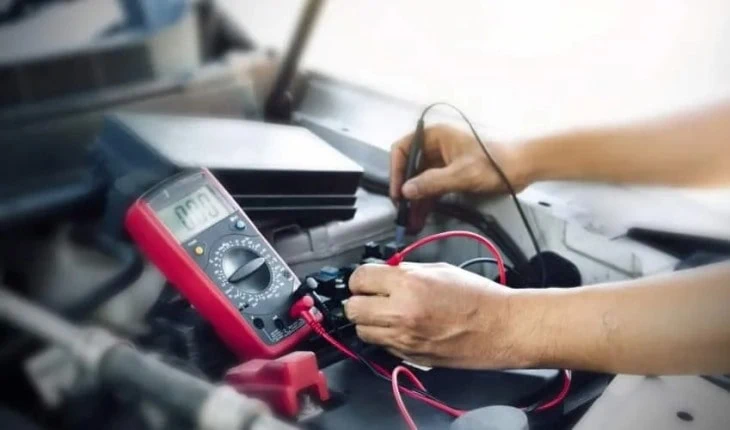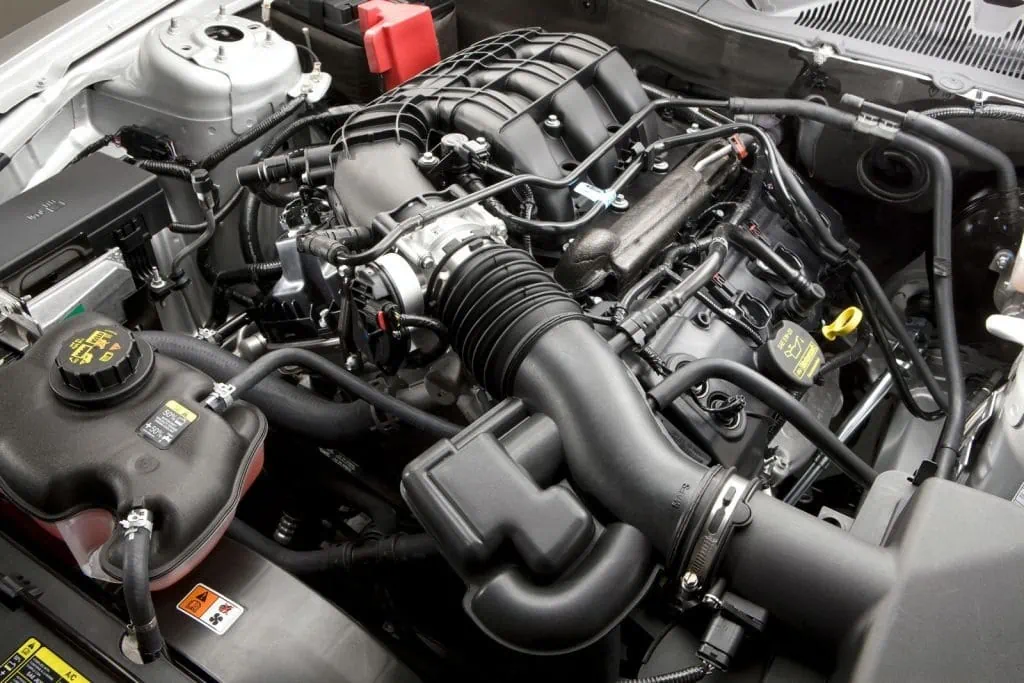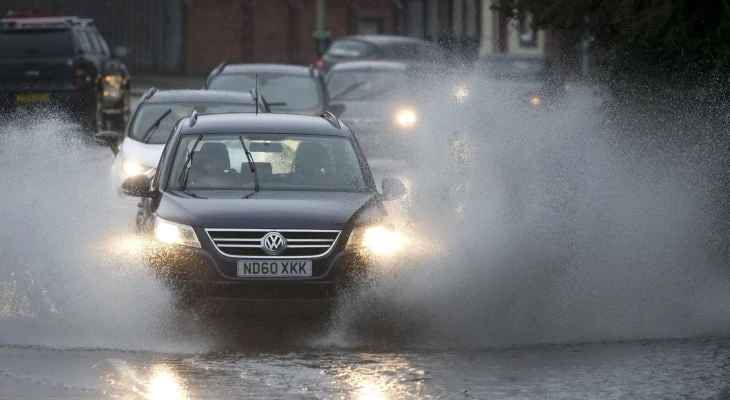Did your car stall out after going through a puddle? Sometimes this isn’t a big deal, but it can mean a hefty repair bill. However, there are some common items to check that can help you get back on the road.
When your car dies after driving through water or a deep puddle, check for wet electrical contacts or water damaged components. Water can cause mechanical damage as well, so it’s a good idea to know how to check a hydro-locked engine. Water blocking air ways can also be an issue and should be inspected for.
Table of Contents
Electrical Checks

First, make sure your battery, its terminals, and cables are all clean and dry. Water interferes with electrical systems, so everything needs to be dry to work best.
Fuses and Short Circuits
With water, there’s a chance of an electrical short circuit. Shorts can cause damage to components and fuses. Generally, a fuse will blow before real damage gets done to a component.
Open your fuse box and check them one at a time, remembering their locations. They shouldn’t appear burnt, and the metal piece inside should not have any breaks. Replace any that appear defective.
Examine Your MAF Sensor
If your car is equipped with a mass air flow sensor, it may have been damaged. These sensors are very fragile. Even coming into contact with water can cause it to malfunction.
The mass air flow sensor (MAF for short) is on the large air tube that runs to the engine. It has very thin wires inside that help the computer decide how much fuel to use.
When the MAF is damaged or contaminated, the air-fuel mixture could become so far off that the car is unable to run. If the MAF looks damaged, you should replace it.
Other Electrical Considerations
Some vehicles do not use a MAF sensor. Another sensor could be causing your troubles, and if so it is likely from its electrical connector being wet or contaminated.
One of the vehicle’s computers may also have been damaged by the water, but that is something that should be left to a professional. Overall you should make sure all connectors are dry and secure.
Mechanical Failures

Water can cause serious mechanical damage if it gets where it doesn’t belong. Alternatively, it may keep the engine from getting the air it needs. You can investigate on your own before deciding to take it to a shop.
The Engine Needs to Breathe
The engine in your car needs a combination of air and fuel (among other things) to start and run. If it can’t get any air, it won’t start. It will also stall if it stops getting air while it’s running.
You’ll want to take a look at the air filter. A filter soaked in water is going to keep air from getting into the engine. You can dry it out, but it’s easier to just replace it since they are fairly cheap.
While you’re looking at the filter, check out the inside of the air box and its tube. Water trapped in either of these can keep the engine from starting, and cause serious damage if the engine does start. Drain out any water, and check for damaged components.
Hydro Locking
This is what nobody wants to think about. Water getting into the engine itself can be very destructive. Even if it starts, care needs to be taken even when no damage occurs.
Water can be sucked into the tube that supplies air to the engine. The engine compresses air during normal operation, but water does not compress. What happens is the engine suddenly stops when it fills with water.
Sometimes no damage is done, and the water slowly drains into the oil pan. You will need to drain the oil and water out, and change the oil filter, in order to safely operate the engine. Running the engine with water in the oil risks causing damage.
Catastrophic Hydro Locking

If the engine won’t start at all, there may have been serious internal damage. You can try to clear the water out by removing the spark plugs and cranking the engine.
Make sure to remove the fuel pump fuse before doing this. Otherwise, you’ll have gas spraying out, which could mean a fire hazard.
When cranking a hydro locked engine with the spark plugs removed, it’s normal for water to come out. Crank it in five second bursts. Keep doing this until no water comes out.
Once you’re done, install new spark plugs and reinstall the fuel pump fuse. Try to start the engine. If it starts you should be in the clear, but you should change your oil and filter before driving.
If the engine will not crank even with the plugs removed, internal engine damage is likely. Unfortunately, in most cases, there is nothing that can be done now but replace the engine. You should have a well known and reputable shop take a look to confirm.
Don’t forget there are many things that can keep a car from starting. Go through all the common items, such as the battery and starter, just to be sure. It’s possible the car stalling is unrelated to the puddle it drove through.

